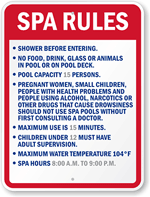MEGA LIMITED TIME OFFER! ENJOY FREE SHIPPING ON ALL ORDERS*
- Home
- Custom Signs
- Funny Pool Signs
-
Pool Rules
-
- Pool Rules Signs
- Pool Rules by State
- Diving Board Rules
- Spray Pad Rules
- Wading Pool Rules
- Water Slide Rules
- Lap Lane
- Private Pool
- Welcome To Our Pool
- Pool Open
- Pool Closed
- Pool Hours Signs
- Pool Pass Required
- Proper Swimwear Required
- Shower Before Entering
- Pool Towel
-
- Pool Safety
- Pool Markers
- Spa Signs
- By Type
No Result Found!
TRENDING SEARCHES
Recently Viewed












